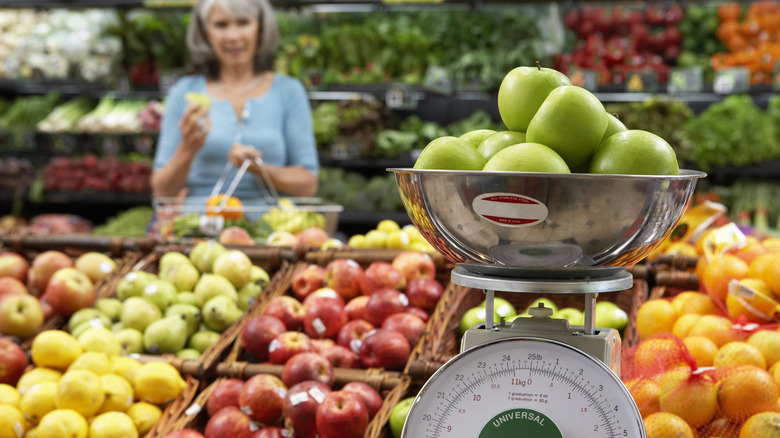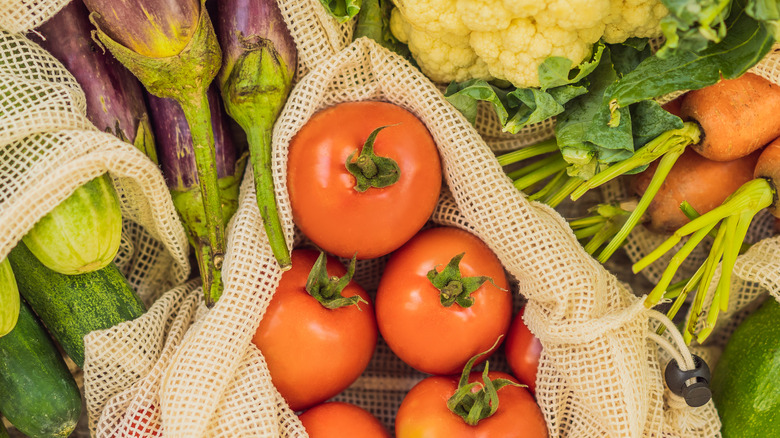What Is A Fresh Format Grocery Store?
It's different strokes for different folks in today's world of restaurants, and foodies' preferences are just as varied when it comes to grocery shopping. In fact, it's common for shoppers to frequent different stores in search of products that cover specific bases and needs. For many consumers, that means skipping traditional supermarkets and swinging by fresh format grocery stores instead.
A fresh format grocery store is a type of specialty market that carries a produce-centric inventory. It might have a limited selection of household goods and cleaning products, but for the most part, perishable produce and packaged foods labeled as "organic" are the stars of the show at these establishments. Fresh format grocery stores are typically physically smaller than supermarkets, offering more bulk options and prepared meals. Sometimes they belong to a larger grocery store chain with multiple locations, and sometimes they're standalone businesses. Either way, a fresh format store is like the color red — you know it when you see it.
Growing produce and a growing industry
Smaller-scale stores like these are common in places like New York City, where sprawling mega-supermarkets are the minority due to limited space, but they are far from just an inner-city thing. Schnucks Fresh by Schnuck Markets opened in Jasper, Indiana in summer 2021. Stores like Hy-Vee's Fast & Fresh, Albertsons' Star Market, Fresh Eats MKT by Kroger, and Giant Heirloom also represent a growing industry.
In 2018, sales at "traditional" grocery stores across the board fell by 1.1%. That might not seem like much, but it could be indicative of a major consumer trend shift that will affect the 90% control over the market share that supermarkets once held. As of 2019, non-traditional groceries rose to control 40% of the market share. More and more, consumers are opting for alternative options like dollar stores, wholesale clubs, convenience stores, and e-commerce platforms. Fresh format grocery stores grew by 3.6% to $30.7 billion in 2018. As a study by consultancy group Inmar Willard Bishop observes, "The key to building market share and increasing loyalty requires one thing: relevancy. All choices must be relevant to the target audience."
A non-traditional grocery store for non-traditional shoppers
As the name suggests, at fresh format grocery stores, produce is typically placed at the center of the store. Surrounding the central produce section are often refrigerated displays of other fresh foods like bottled kefir drinks, kombucha, yogurt, tofu, etc. In addition to a wide assortment of fruits and vegetables, fresh format grocery stores are also characterized by bulk foods and prepared hot meals. Some stores might highlight local growers for a stronger sense of community, and there's usually a focus on offerings like fresh seafood, meat, and in-house bakery items.
Stores like these might be a better fit for foodies' specific dietary habits, providing a slew of options for plant-based eaters in particular. Also, for folks in small households cooking for just one or two, fresh format grocery stores can offer a calmer, more expedited shopping process. That big bag of spinach from a traditional grocer may spoil before they can reach the end of it. Same deal with a full loaf of bread. For shoppers like these, a full cart of items might just not be necessary. If all you need is a basket full of some essentials and ingredients for the week, the fresh format grocery store might cover most of your needs.


